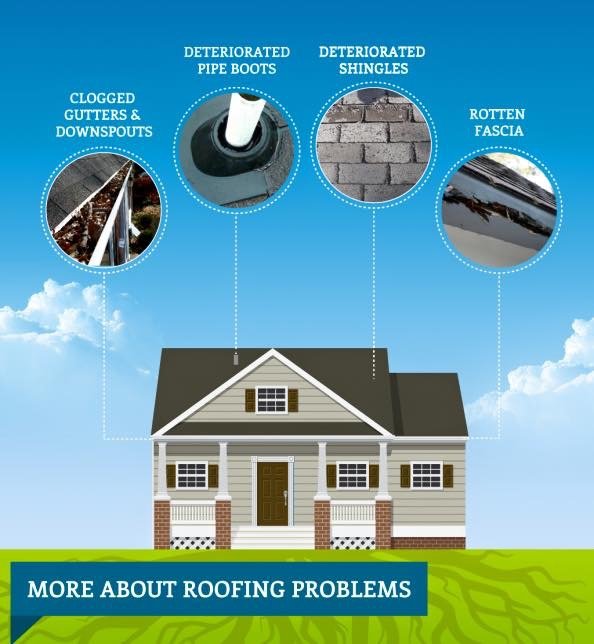Typical Roof Covering Setup Blunders And Just How To Stay Clear Of Them
Typical Roof Covering Setup Blunders And Just How To Stay Clear Of Them
Blog Article
Content Created By-Hensley Mark
When you're planning a roofing installment, it's simple to neglect vital details that can bring about significant troubles down the line. You may be attracted to cut edges on material selection or skip correct blinking installation, but these usual blunders can cause costly fixings later on. Understanding the value of air flow and sticking to regional building ordinance is necessary for an effective job. So, what are the essential actions you should require to guarantee your roof covering stands the test of time? Allow's explore some efficient methods to prevent these challenges.
Poor Material Choice
When it involves roof covering installation, picking the wrong materials can bring about expensive problems down the line. You could assume that any roof product will do, but that's a common mistaken belief. It's vital to pick products that match your neighborhood climate and the particular demands of your home.
For instance, if you live in a location with hefty rain or snow, selecting asphalt shingles might not be the most effective selection. Rather, think about more resilient alternatives like steel or slate.
Additionally, pay attention to the high quality of the materials you're thinking about. Affordable products may save you money upfront, but they frequently do not have longevity and can lead to frequent fixings or substitutes.
You must additionally consider the style of your home and make certain the materials you select will keep its visual appeal.
Ultimately, don't neglect to seek advice from specialists. They can supply important understandings and recommend materials that abide by local building codes.
Spending time in correct product choice now can help you prevent headaches and expenditures in the future, making your roofing task a success.
Inadequate Flashing Setup
Choosing the ideal materials isn't the only element that can lead to roof covering troubles; insufficient blinking installment can likewise develop substantial concerns. Flashing is important for routing water away from vulnerable areas, such as chimneys, skylights, and roofing system valleys. If it's not installed appropriately, you take the chance of water breach, which can cause mold development and structural damages.
When you set up blinking, guarantee it's the appropriate type for your roof's layout and the local climate. For https://roofing-membrane96173.fare-blog.com/33368826/overlooking-roof-covering-ventilation-can-cause-costly-damages-discover-the-key-elements-that-assure-an-effective-installation-and-secure-your-investment , metal blinking is typically a lot more sturdy than plastic in locations with hefty rain or snow. Make certain the flashing overlaps properly and is secured tightly to stop voids where water can leak through.
You ought to additionally focus on the installment angle. Blinking must be positioned to guide water away from your home, not towards it.
If you're not sure concerning the installation process or the materials required, speak with a professional. They can aid determine the best flashing choices and guarantee every little thing is mounted appropriately, safeguarding your home from prospective water damages.
Taking these steps can conserve you time, money, and headaches in the future.
Neglecting Ventilation Requirements
While numerous homeowners concentrate on the visual and architectural facets of roof covering installment, disregarding ventilation needs can cause serious lasting repercussions. Proper ventilation is crucial for regulating temperature and wetness degrees in your attic, stopping problems like mold and mildew development, timber rot, and ice dams. If you don't mount sufficient air flow, you're establishing your roof up for failure.
To avoid this blunder, first, evaluate your home's details air flow requirements. A balanced system usually consists of both intake and exhaust vents to promote airflow. Ensure you have actually installed soffit vents along the eaves and ridge vents at the height of your roof. This mix enables hot air to escape while cooler air goes into, keeping your attic area comfy.
Also, think about the kind of roofing product you have actually chosen. Some products might require extra ventilation approaches. Double-check your local building regulations for air flow standards, as they can vary dramatically.
Finally, do not forget to inspect your air flow system on a regular basis. Blockages from debris or insulation can hamper air movement, so maintain those vents clear.
Verdict
Finally, staying clear of usual roofing system installment errors is key to guaranteeing your roof covering's long life and effectiveness. By picking the right materials for your climate, mounting blinking appropriately, and dealing with ventilation demands, you can stop expensive concerns later on. Don't neglect to familiarize yourself with local building regulations and timetable normal examinations. With these steps, you'll delight in a safe, sturdy roof that protects your home for several years to find. Satisfied visit website !
